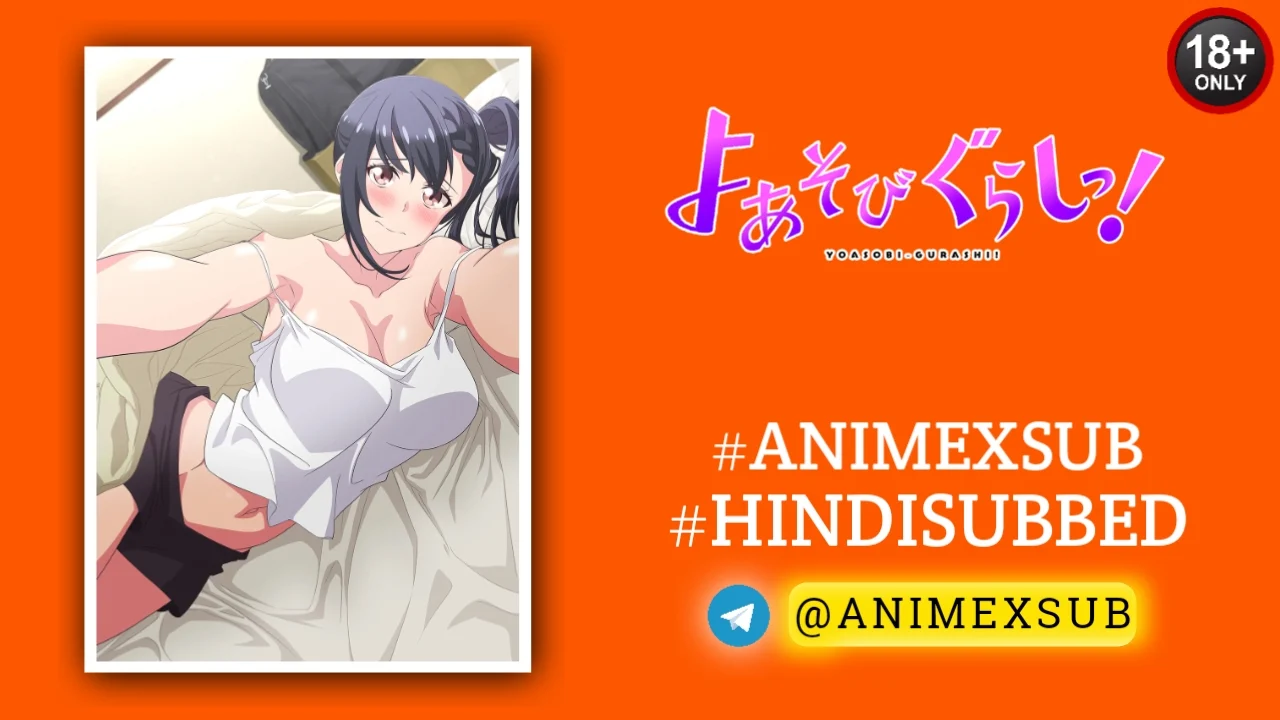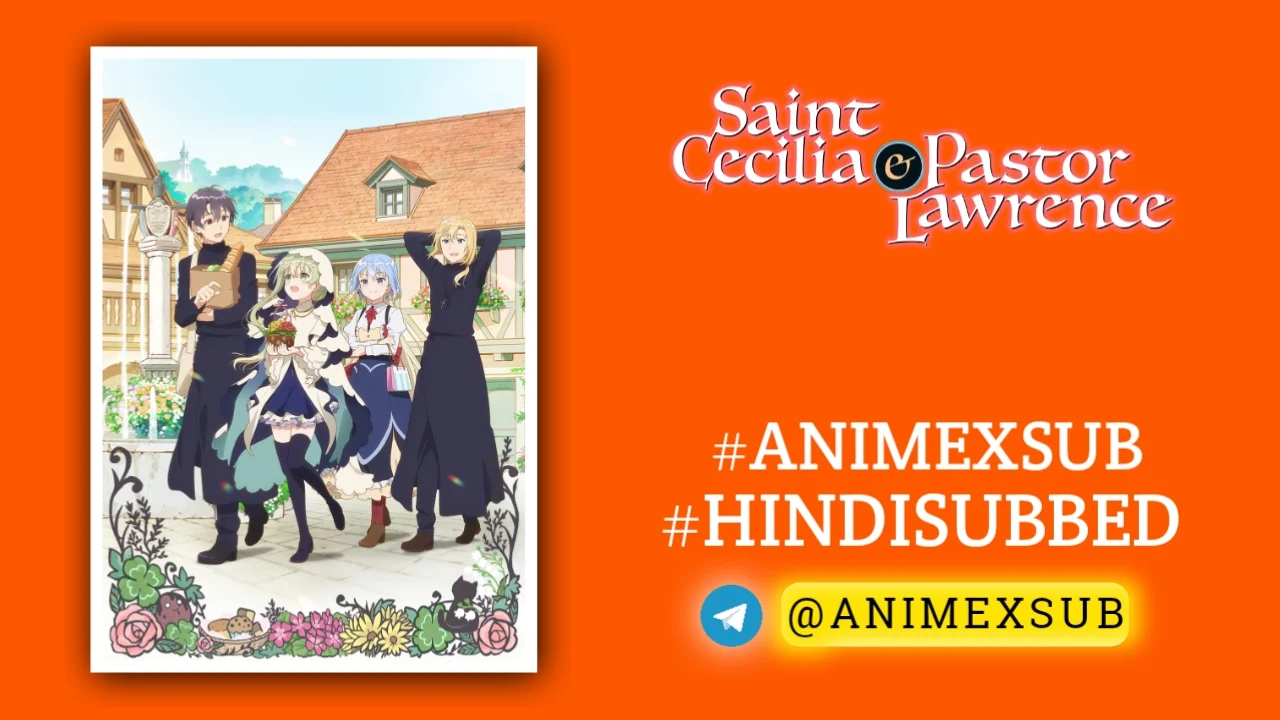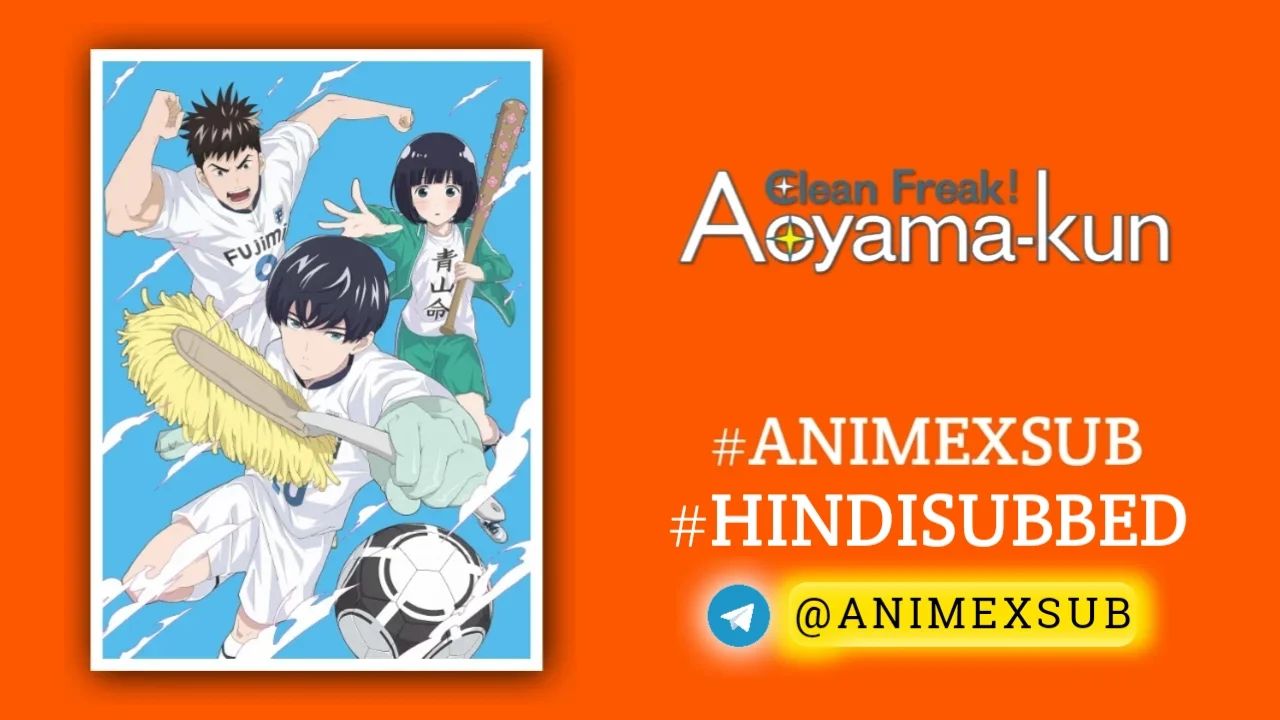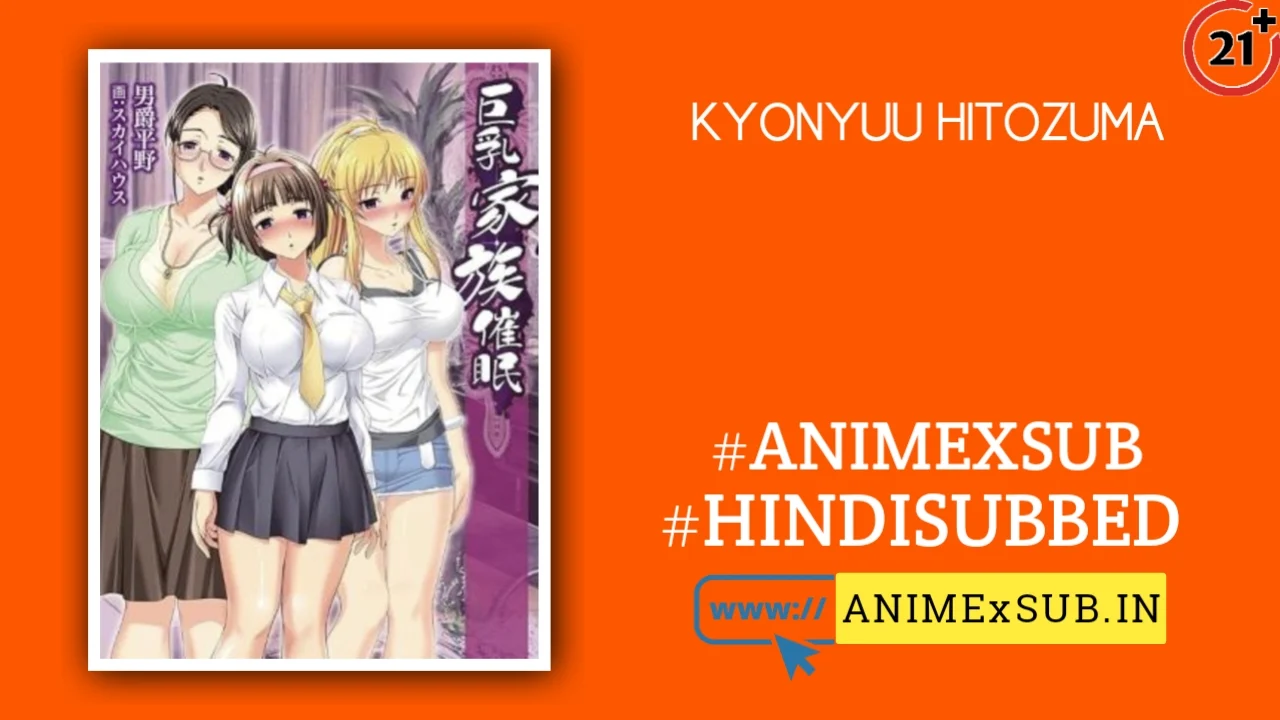
The “Hentai” Prince and the Stony Cat Hindi Subbed [12/12] | Hentai Ouji to Warawanai Neko. Hindi Sub

Hentai Ouji to Warawanai Neko.
Hentai Prince & the Stony CatSynopsis
Youto Yokodera is always thinking about his carnal desires, but no one acknowledges him as a pervert. He learns about a cat statue that supposedly grants wishes. The boy goes to pray that he will be able to express his lustful thoughts whenever and wherever he wants. At the statue, Youto encounters Tsukiko Tsutsukakushi, a girl from his high school with her own wish—that she would not display her real intentions so readily. (Source: Anime News Network)
Watch Trailer
Characters
Episodes
How To Download Tutorial
The Hentai Prince and the Stony Cat Season 1: A Quirky Dive into Wishes and Identity
The Hentai Prince and the Stony Cat (also known as Hentai Ouji to Warawanai Neko or HenNeko), a 2013 anime adaptation of Sou Sagara’s light novel series, is a fascinating blend of romantic comedy, fantasy, and psychological exploration. Spanning 12 episodes, this J.C.Staff production takes a seemingly absurd premise—a wish-granting cat statue that swaps personality traits—and crafts a narrative that’s equal parts hilarious, heartfelt, and surprisingly introspective. While it may not reinvent the harem rom-com genre, Season 1 stands out for its clever exploration of identity, authenticity, and the unintended consequences of getting what you wish for. This article delves into the show’s unique strengths, its flaws, and why it remains a hidden gem in the anime landscape, drawing on its narrative depth, character dynamics, and thematic resonance.
A Premise That Hooks with Absurdity and Heart
At its core, The Hentai Prince and the Stony Cat revolves around Youto Yokodera, a high school sophomore whose outwardly normal demeanor masks a raging pervert obsessed with girls. Frustrated by his inability to express his true thoughts, Youto seeks out a legendary cat statue rumored to grant wishes. He offers his beloved body pillow, Barbara, to shed his “façade” of respectability. At the same statue, he encounters Tsukiko Tsutsukakushi, a reserved underclassman who wishes to suppress her overly emotional nature to seem more mature. The Stony Cat, a mischievous deity, grants their wishes—but with a twist. Youto becomes unable to filter his lewd thoughts, earning the nickname “Hentai Prince,” while Tsukiko loses all emotional expression, becoming a stoic, unreadable figure. The catch? Their unwanted traits are swapped with others, setting off a chain of comedic and emotional misadventures as they try to reclaim their original selves.
The premise is delightfully absurd, leaning into the exaggerated tropes of harem anime while subverting them with a supernatural twist. Unlike many rom-coms that rely solely on fanservice or predictable love triangles, HenNeko uses the Stony Cat’s powers to explore how people hide their true selves and the chaos that ensues when those masks are stripped away. This setup allows the show to balance slapstick humor—like Youto blurting out inappropriate thoughts—with deeper questions about authenticity and self-perception.
Character Dynamics: A Cast That Shines Through Chaos
The strength of HenNeko lies in its small but vibrant cast, each bringing distinct flavors to the narrative. Youto, voiced by Yuki Kaji, is a refreshing take on the harem protagonist. While his perversion is played for laughs, his struggle to reconcile his inner desires with societal expectations gives him surprising depth. His journey from embracing his unfiltered self to realizing the value of restraint is both funny and relatable, making him more than just a caricature of teenage hormones.
Tsukiko, voiced by Yui Ogura, is the emotional core of the series. Her deadpan delivery and struggle to regain her emotions make her both endearing and tragic. Her interactions with Youto, often laced with dry humor, create a dynamic that feels genuine despite the fantastical premise. Azusa Azuki (Kaori Ishihara), a popular transfer student who hides her loneliness behind a haughty façade, adds another layer to the story. Her arc, which delves into past traumas and her fear of vulnerability, is one of the show’s most emotionally resonant. Supporting characters like Tsukiko’s older sister Tsukushi and Youto’s friend Ponta add comedic and narrative depth, though some, like the Italian exchange student Emanuela, feel underutilized.
What sets these characters apart is how their swapped traits force them to confront their insecurities. The show uses these changes not just for humor but to peel back layers of their personalities, revealing how much of their identity is shaped by what they choose to show or hide. This focus on character-driven storytelling elevates HenNeko above typical harem fare, making the relationships feel earned rather than inevitable.
Thematic Depth: Wishes, Consequences, and Identity
HenNeko distinguishes itself by weaving a surprisingly thoughtful commentary on identity and the human tendency to hide one’s true self. The Stony Cat’s wish-granting mechanism, which operates on an “equivalent exchange” principle, forces characters to confront the parts of themselves they reject. Youto’s unfiltered honesty exposes the hypocrisy of societal norms, while Tsukiko’s loss of emotion highlights the importance of vulnerability. The show questions whether shedding one’s façade leads to freedom or chaos, and whether true connection requires embracing both the good and the flawed parts of oneself.
The series also explores memory and its role in shaping identity. Later episodes introduce time-travel elements, revealing past connections between Youto, Tsukiko, and others that add emotional weight to their present struggles. While these plot twists can feel convoluted, they underscore the idea that our past shapes who we are, even when we can’t fully remember it. This blend of fantasy and psychological insight gives HenNeko a unique edge, inviting viewers to reflect on their own masks and desires.
Visuals and Sound: A Playful Aesthetic
J.C.Staff’s animation is vibrant and expressive, capturing the show’s tonal shifts from zany comedy to poignant drama. Character designs by Kantoku are colorful and distinct, with Tsukiko’s emotionless expressions and Youto’s exaggerated reactions stealing the show. The animation shines in comedic moments, like Youto’s over-the-top outbursts, and in quieter scenes, such as Tsukiko’s subtle attempts to convey feeling through body language. The use of soft pastels and dynamic camera angles enhances the whimsical yet introspective mood.
The soundtrack, composed by Tomoki Kikuya, complements the series with playful, upbeat tracks and softer melodies for emotional beats. The opening theme, “Fantastic Future” by Yukari Tamura, is catchy and sets the tone for the show’s quirky energy, while the ending, “Baby Sweet Berry Love” by Yui Ogura, adds a sweet, reflective note. Voice acting is a standout, with Yuki Kaji’s manic energy and Yui Ogura’s deadpan delivery perfectly capturing their characters’ struggles.
Where It Stumbles: Pacing and Narrative Clutter
Despite its strengths, HenNeko isn’t flawless. The show’s second half introduces complex plotlines—time travel, memory manipulation, and additional wishers—that can feel rushed within the 12-episode format. These elements, while ambitious, sometimes detract from the character-driven focus, leaving certain threads unresolved or underexplored. The harem setup, while minimal compared to genre peers, occasionally leans on predictable tropes, like contrived misunderstandings, that dilute the story’s originality. Additionally, some viewers may find the humor, rooted in Youto’s perversion, too lowbrow or repetitive, though it rarely crosses into explicit fanservice.
The pacing falters in episodes 8–10, where the narrative juggles too many ideas, from Azusa’s backstory to the time-travel arc, without fully resolving them. This can make the climax feel abrupt, though the emotional payoff in the final episodes redeems much of the clutter. Fans of the light novels may also note that the anime condenses significant material, which can make certain character motivations feel less fleshed out.
Why It’s a Hidden Gem
The Hentai Prince and the Stony Cat Season 1 is a delightful paradox: a show that embraces its absurd, cheeky title while delivering a story with surprising heart and insight. Its exploration of identity, paired with a likable cast and clever humor, makes it a standout in the crowded rom-com genre. While it stumbles with pacing and overambitious plotting, its ability to balance comedy, romance, and introspection keeps it engaging. The show’s refusal to rely heavily on fanservice, focusing instead on character growth and emotional stakes, feels refreshing for a series with “Hentai” in the title.
For viewers seeking a rom-com that’s equal parts silly and profound, HenNeko is worth a watch. It’s not perfect, but its unique premise and heartfelt moments make it a memorable journey. Available on platforms like Crunchyroll (until its removal in 2022) and Google Play, it’s an accessible dive into a world where wishes go awry, and being true to oneself is harder—and more rewarding—than it seems.
Final Thoughts
The Hentai Prince and the Stony Cat Season 1 is a bold, quirky take on the harem rom-com that dares to ask what happens when you get exactly what you wish for. Its blend of humor, heart, and psychological depth, coupled with a charming cast and vibrant presentation, makes it a standout, even if it doesn’t always stick the landing. For anime fans looking for something beyond the typical, this series offers a fresh perspective on identity and connection, wrapped in a delightfully weird package.
















